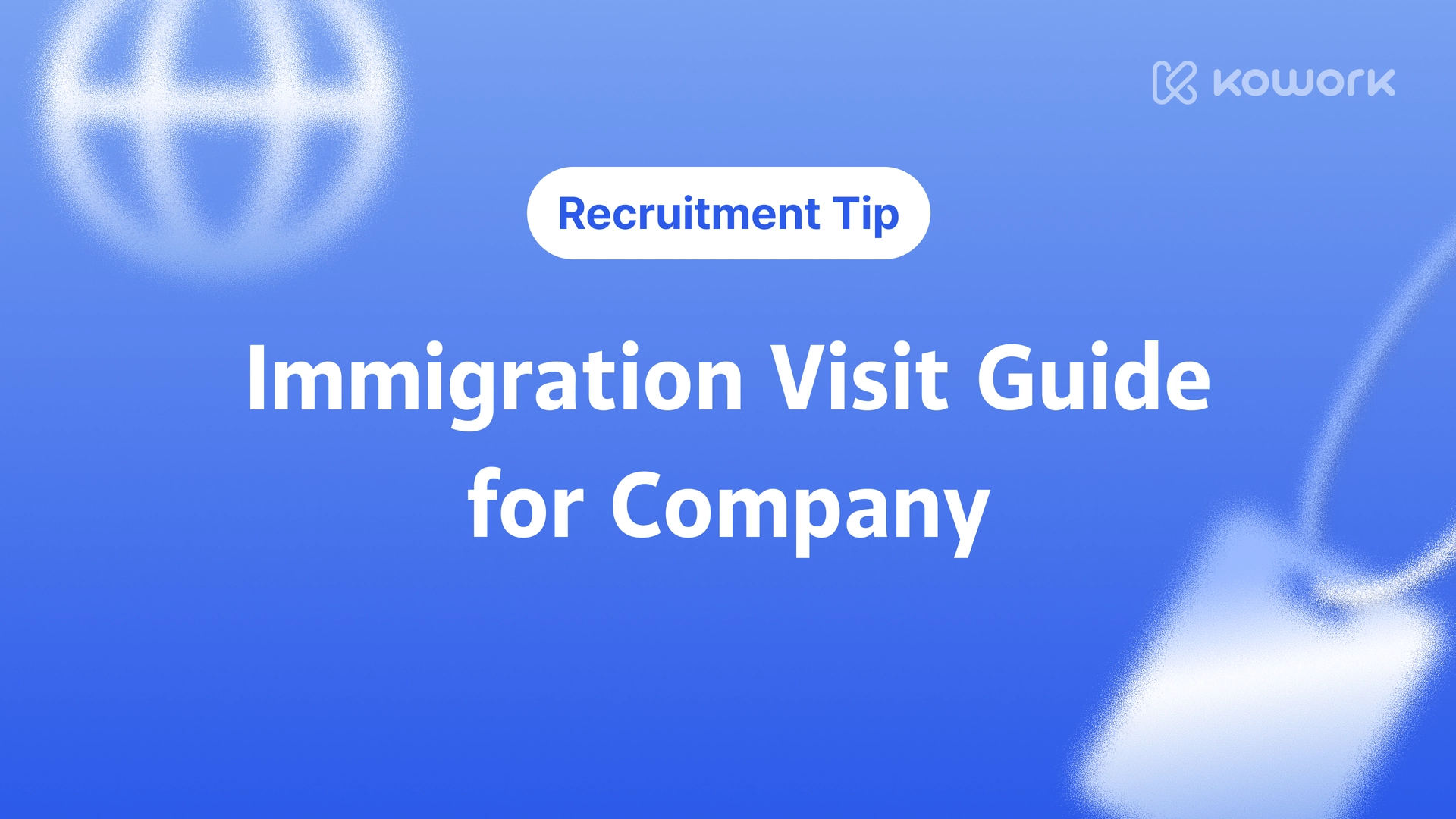Hello,
This is Hyunsik Ko, Sales Leader at KOWORK. 😀
If you’re preparing for E-7 visa issuance, you may have heard something like:
“A company must have five Korean employees to hire one foreign employee.”
Because of this, some companies with fewer than five Korean employees might have given up on hiring foreign staff.
To get straight to the point:
That’s not always true.
The 5:1 ratio of Korean to foreign employees only applies to five specific job categories.
Today, I’d like to address the “5:1 Korean-foreigner employment ratio” rumor and the actual screening criteria designed to protect jobs for Korean nationals.
✅ What is the “Screening Criteria for Protecting Employment of Korean Nationals”?
This criteria is applied when hiring foreign professionals to protect Korean jobs and maintain employment order.
▪️ Company Size
If a company primarily serves the domestic market and employs fewer than five Korean staff, hiring foreigners is generally restricted.
Only those who have subscribed to employment insurance for at least three months and receive at least minimum wage are acknowledged as employees.
→ The company must have been operating for at least three months before applying.
▪️ Foreigner Hiring Ratio
For certain job categories, the number of foreign employees must not exceed 20% of the number of Korean employees.
This ratio includes those with visas other than E-7 as well.
→ If the ratio is exceeded, hiring new or replacement foreign workers, or visa status change, is not allowed.
Not all foreign employees and visa types are included in this ratio.
Below, I’ll clarify which visas count toward the foreign worker headcount.
✅ Visas Included in the Foreigner Employee Headcount
- Professor (E-1)
- Research (E-3)
- Technical Guidance (E-4)
- Professional Occupation (E-5)
- Arts & Performance (E-6)
- Designated Activities (E-7)
- Professional Manpower (E-7-1)
- Semi-professional Manpower (E-7-2)
- General Skilled Manpower (E-7-3)
❌Visas NOT Included in the Foreign Employee Headcount
- Designated Activities (E-7): Skilled Worker (E-7-4)
- Seasonal Worker (E-8)
- Non-Professional Employment (E-9)
- Vessel Crew Employment (E-10)
- Visit & Employment (H-2)
- F-series visas eligible for employment:
- Resident (F-2)
- Overseas Korean (F-4)
- Permanent Resident (F-5)
- Marriage Immigrant (F-6)
⚠️ Why So Much Confusion?
Many people misunderstand the criteria as follows:
“Korean employees fewer than five + domestic business → foreigner hiring impossible?”
But if you look at the exceptions, you’ll see this isn’t always the case.
✅ Principles of Application (for E-7-1 Professional Manpower)
For E-7-1 Professional Manpower, the employment protection criteria are generally NOT applied (except for salary requirements), given the difficulty of substituting these professionals with Koreans and their contributions to employment and foreign capital inflow.
However, for certain job categories where mass issuance of invitation letters is a concern, the employment protection screening will still be enforced.
❗ Exceptionally Regulated Job Categories (only these five for E-7-1)
- Mechanical Engineer (2351)
- Draftsperson (2395)
- Travel Product Developer (2732)
- Overseas Salesperson (2742)
- Interpreter/Translator (2814)
🎓 Exception for Government Scholarship Students
However, foreign graduates who were government scholarship students are exempt from these criteria even in the five job categories listed above.
This means companies with fewer than five Korean employees can still obtain E-7 visas for such positions if the applicant is a government scholarship graduate.
*Graduates with a ‘Work-Study Linked International Student’ (D-2-7) status are exempt from the employment ratio and size regulations for professional/semiprofessional/general skilled roles, and can apply across a broader range of job categories.
That covers the screening criteria for protecting Korean national employment.
If you have any further questions, please do not hesitate to contact us at:
E-mail: hyunsik@kowork.kr
Tel: 02-6951-4108






















